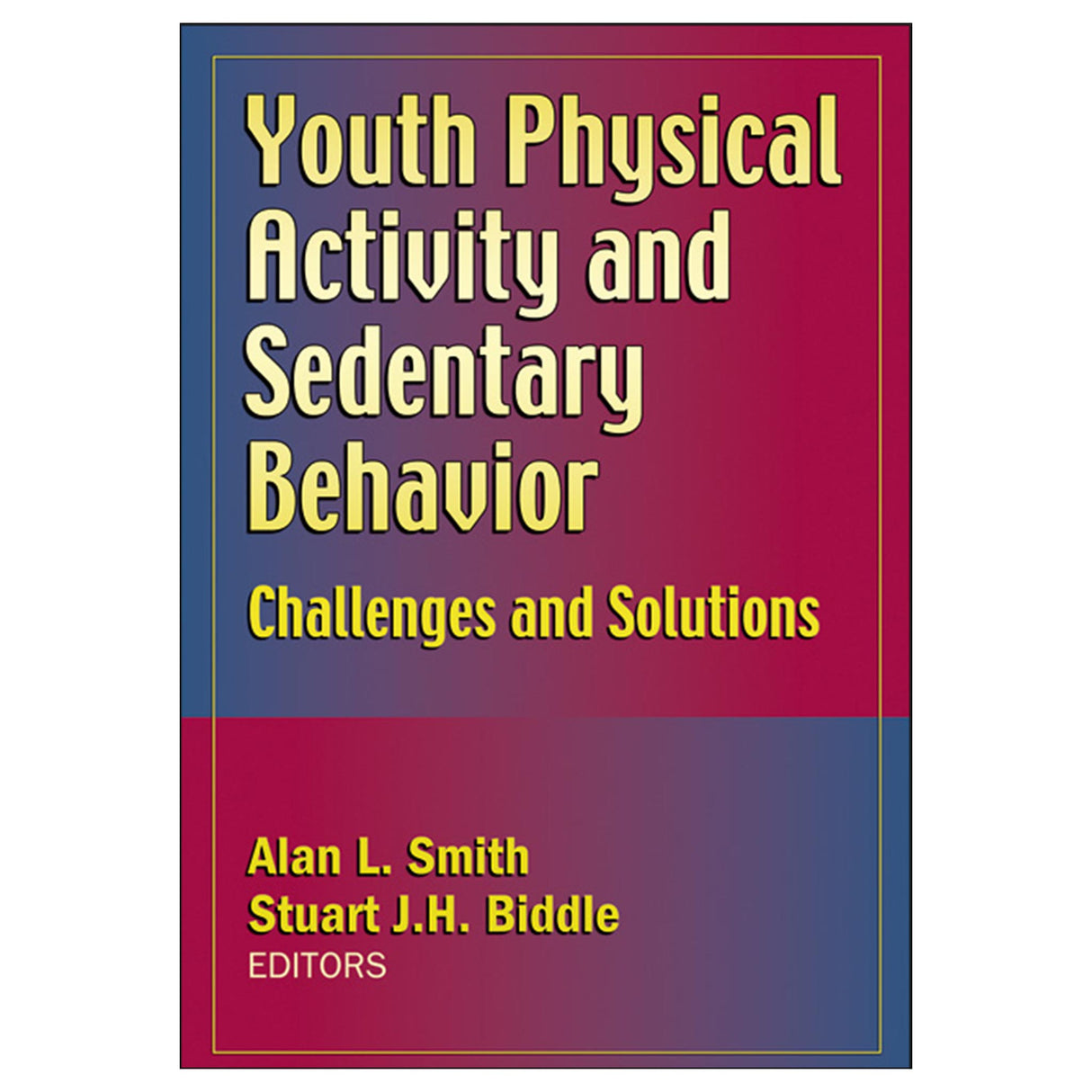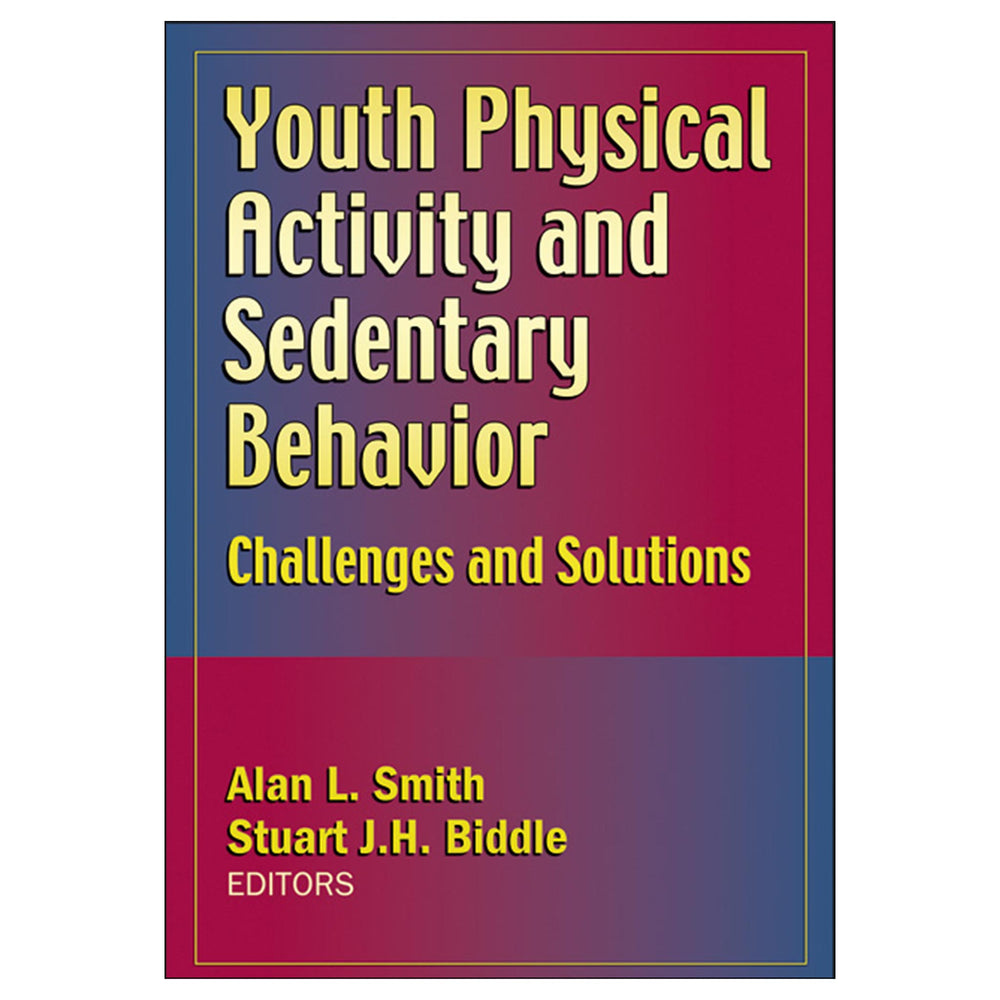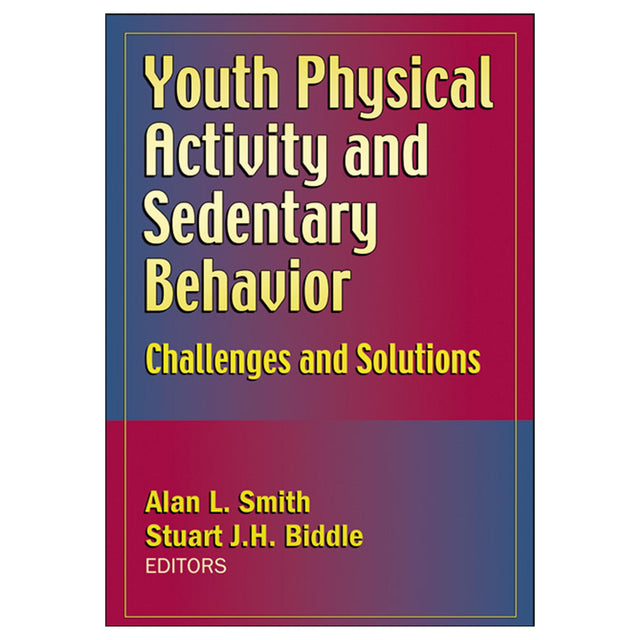Youth Physical Activity and Sedentary Behavior
Challenges and Solutions
Author: Alan L. Smith, Stuart J.H. Biddle
$79.00 CAD
As interest in the public health challenge of youth inactivity increases, the ambitious Youth Physical Activity and Sedentary Behavior sets a standard for addressing a problem with worldwide implications. Drawing on the contributions of a diverse group of international experts, this reference challenges professionals, researchers, and students to implement new solutions and further their research and work.
No other text addresses the causes, contributing factors, and fundamental issues in dealing with youth physical activity with such depth or comprehensive coverage. Using a multidisciplinary approach, Youth Physical Activity and Sedentary Behavior breaks away from traditional thinking that places activity and sedentary behavior on a single continuum, which may limit progress in addressing youth inactivity. Instead, the authors encourage readers to focus on how sedentary and physically active behaviors coexist and consider how the two behaviors may have different determinants. In doing so, the text also considers developmental features such as maturation, ethnicity, environment, and genetics across both childhood (through age 12) and adolescence (the teen years). By looking at a variety of psychosocial and epidemiological factors, the authors set the stage for a critical analysis of beliefs and views at a time when many assumptions are taken for granted.
This book is organized in three parts that build on one another to deepen readers' understanding of this complex problem. This text begins by addressing the fundamental issues and assumptions pertaining to youth physical activity and sedentary behavior, covering such topics as measurement of the behavior in question, health outcomes, concepts, and trends in a public health context. Once readers have grasped this foundational knowledge, they advance to part II for a comprehensive account of personal factors likely to be associated with the problem. Part III moves beyond the individual into the wider social and contextual aspects of physically active and sedentary living in young people. Through this concluding part, readers gain the latest thinking on how parents, peers, schools, organized sport, and related factors link to youth physical activity and sedentary behavior.
Each chapter presents the latest theory and research, real-world approaches to implementation, and background information to encourage discussion and future directions in national policy making. Youth Physical Activity and Sedentary Behavior also contains the following features that add to an unprecedented learning experience:
-An at-a-glance look at why and how research can be used in the real world helps researchers relate their work to overall solutions.
-Coverage of more issues related to this subject than are available in any other reference makes this a one-stop resource.
-Internationally respected foreword writer, editors, and contributors provide a cross-disciplinary perspective valuable for putting solutions into a wider context.
-Applications for Professionals boxes and Applications for Researchers boxes at the end of each chapter provide practical suggestions for implementing solutions.
Youth Physical Activity and Sedentary Behavior: Challenges and Solutions considers current research about youth physical activity and sedentary behavior across a range of personal factors as well as cultural and social influences. The text communicates the knowledge base on developmental, economic, psychological, and social factors related to youth physical activity and sedentary behavior and provides an overview of youth-specific approaches to addressing the problem of inactivity among youth.
Audience
A reference for exercise science professionals and researchers, social scientists, consultants, and health officials who want to improve the health of children; a reference for upper-undergraduate and graduate courses in developmental sport and exercise psychology, physical activity and health, behavioral medicine, health promotion, and youth physical activity.
Part I. Conceptualization of Youth Physical Activity and Sedentary Behavior
Chapter 1. Definitions and Measurement
Simon J. Marshall and Gregory J. Welk
Understanding Physical Activity and Inactivity
Understanding Active and Sedentary Behavior in Youth
Recommended Levels of Physical Activity and Sedentary Behavior
Measuring Physical Activity and Sedentary Behavior
References
Chapter 2. Youth Health Outcomes
David J. Stensel, Trish Gorely, and Stuart J.H. Biddle
Overweight and Obesity
Type 2 Diabetes
Cardiovascular Disease Risk
Skeletal Health
Mental Health
Conclusion
References
Chapter 3. A Sociohistorical Analysis of U.S. Youth Physical Activity and Sedentary Behavior
Mary McElroy
Early 20th Century Views of Children's Health
The First Weight Crisis and American Youth
The Intractability of Youth Obesity
The Growth of the Media Generation
Challenges Facing Contemporary Families
Lessons Learned From the Past for the Future
References
Chapter 4. Conceptual Perspectives
Claudio R. Nigg and Raheem J. Paxton
Necessity and Status of Theory
A Review of Theory-Based Interventions
Critical Evaluation of Applied Theory
Improving Our Theoretical Understanding
References
Chapter 5. “Couch Potatoes” and “Wind-Up Dolls”? A Critical Assessment of the Ethics of Youth Physical Activity Research
Michael Gard
Couch Potatoes?
Wind-Up Dolls?
Some Alternatives
Ethics
References
Part II. Developmental and Psychological Factors in Youth Physical Activity and Sedentary Behavior
Chapter 6. Biocultural Factors in Developing Physical Activity Levels
Robert M. Malina
A Biocultural Perspective
Factors Related to Physical Activity Levels
Activity Levels, Fitness, and Sport
Implications
References
Chapter 7. Youth Attitudes
Martin S. Hagger and Nikos L.D. Chatzisarantis
Attitudes in Social Science Research
Modifications of the Theory of Planned Behavior
Individual Differences in the Theory of Planned Behavior
Recommended Interventions Derived From the TPB
Conclusion
References
Chapter 8. Motivational Characteristics
Stuart J.H. Biddle, Darren C. Treasure, and C.K. John Wang
Descriptive Approaches
Framework for Theoretical Perspectives
Suggestions for Action
Conclusion
References
Chapter 9. The Role of the Self
Peter R.E. Crocker, Kent C. Kowalski, and Valerie Hadd
General Conceptions of the Self
The Physical Self
The Self and Physical Activity
Conclusion
References
Chapter 10. Youth With Movement Difficulties
Janice Causgrove Dunn and Donna L. Goodwin
Importance of Physical Activity for This Population
Theoretically Based Predictions and Research Findings
Environmental Issues
Intervention Research
Recommendations for Future Research
References
Part III. Social and Contextual Factors in Youth Physical Activity and Sedentary Behavior
Chapter 11. The Family
Brian E. Saelens and Jacqueline Kerr
Types of Familial Influence
Correlational Studies of Familial Influences
Studies of Other Family Factors
Intervention Studies
Conclusions and Recommendations for Research
References
Chapter 12. Peers
Alan L. Smith and Meghan H. McDonough
Basic Concepts in Peer-Related Research
Peer Research
Promising Future Research Directions
Conclusion
References
Chapter 13. Physical Activity Levels During the School Day
Gareth Stratton, Stuart J. Fairclough, and Nicola D. Ridgers
Active Transportation
Recess
Physical Education
Summary
References
Chapter 14. Organized Sport and Physical Activity Promotion
Robert J. Brustad, Runar Vilhjalmsson, and Antonio Manuel Fonseca
Organized Sport Participation and Children's Well-Being
Youth Sport Value Structures
Theoretical Perspectives
Developmental and Motivational Considerations
Gender and Socioeconomic Influences
Programming to Facilitate Lifelong Physical Activity
References
Chapter 15. Community Out-of-School Physical Activity Promotion
David A. Dzewaltowski
After-School Programs in the United States
The Organized Community Opportunities Model
Research Based on the Organized Community Model
Conclusions and Future Directions
References
Chapter 16. Living Environments
Jo Salmon, John C. Spence, Anna Timperio, and Nicoleta Cutumisu
Conceptual and Theoretical Perspectives
The Home Environment
The Neighborhood Environment
Implications for Research and Practice
References
Chapter 17. Economic Principles
Chad D. Meyerhoefer
Individual Choices and the Market Economy
Market Failures
Policy Solutions
The Field in Perspective
References
Chapter 18. Culturally Appropriate Research and Interventions
Suzanna M. Martinez, Elva M. Arredondo, Guadalupe X. Ayala, and John P. Elder
Physical Inactivity in Immigrant and Ethnic Minority Populations
Adapting Models and Theories
Unique Contextual Factors
Culturally Appropriate Interventions
Conclusion
References
"This is a very thought-provoking book, considering the current state of childhood obesity in this country. It addresses the major problem in our culture of inactivity or a sedentary lifestyle."
-Doody's Book Review




